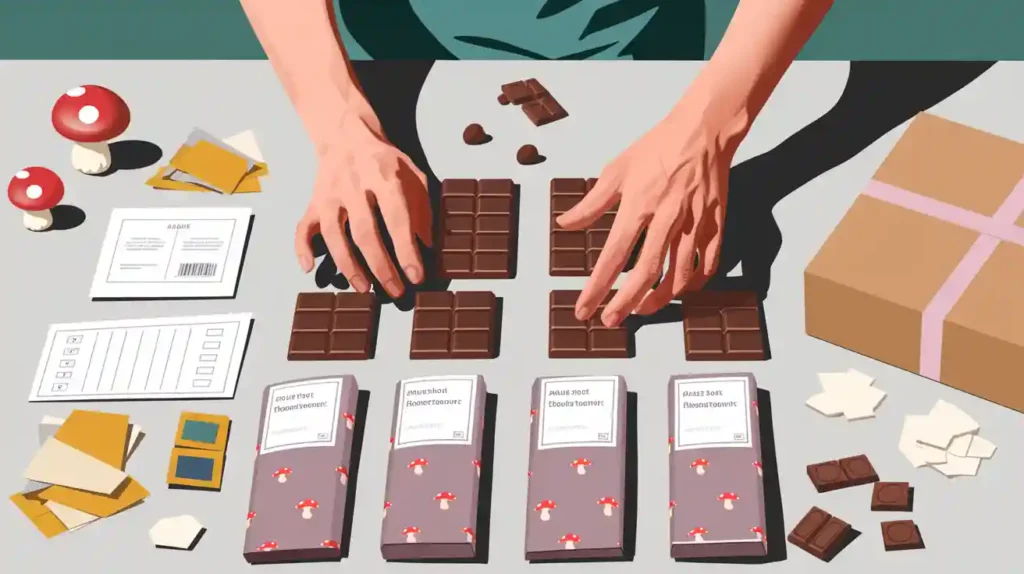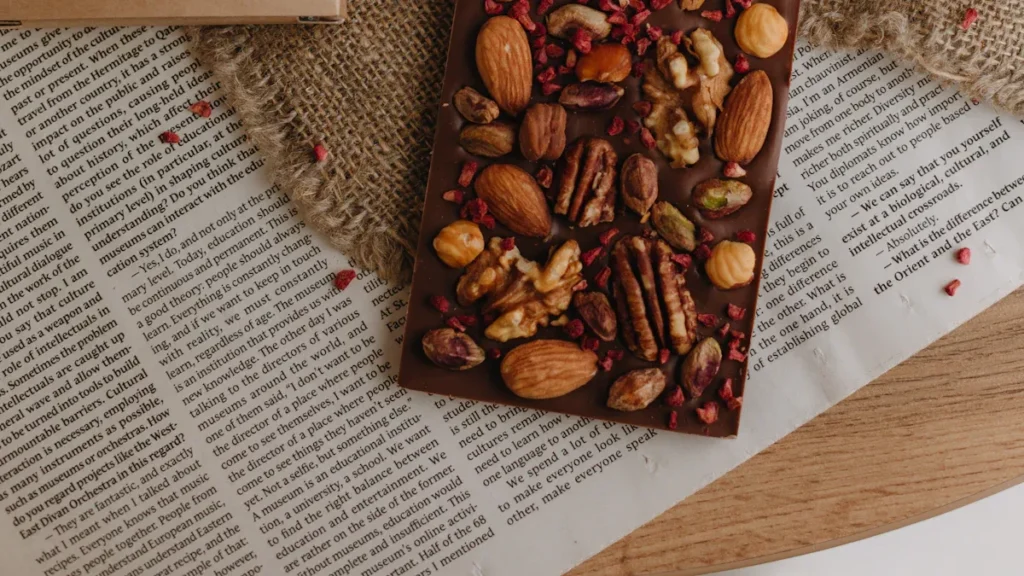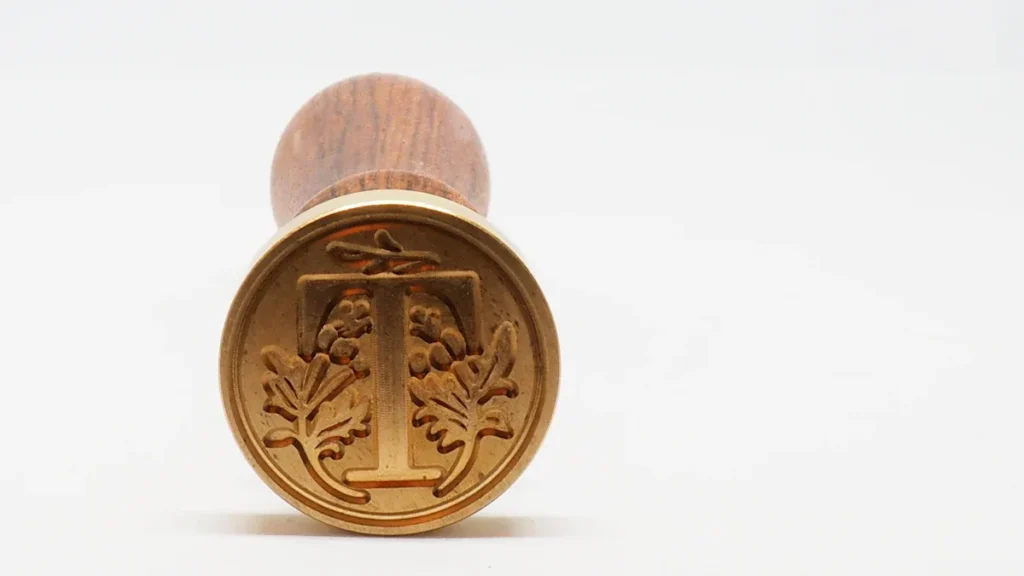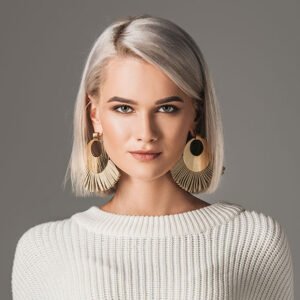
Creating custom magic mushroom chocolate bar packaging demands close attention to safety and compliance. Magic mushroom chocolate bar packaging shields the bars from light, oxygen, and moisture, helping to keep them fresh.
Clear labeling on magic mushroom chocolate bar packaging builds trust and ensures legal compliance.
The design of magic mushroom chocolate bar packaging should balance user-friendliness with visual appeal.
Using materials like foil enhances the safety of magic mushroom chocolate bar packaging.
Key Takeaways
Protect magic mushroom chocolate bars from moisture, light, and oxygen to keep them fresh and potent.
Design packaging that is easy to open, resealable, and clearly labeled to ensure safety and build customer trust.
Choose sustainable and recyclable materials to reduce waste and connect with eco-conscious consumers.
Magic Mushroom Chocolate Bar Packaging

Packaging Needs
Magic mushroom chocolate bar packaging must protect the product from moisture, light, and oxygen. These elements can degrade both the flavor and potency of the chocolate bars. Packaging with strong barrier properties, such as mylar or foil-lined bags, helps preserve freshness by preventing contamination and locking in product integrity. Resealable and child-resistant features are essential for maintaining freshness after opening and for meeting safety regulations. Secondary packaging, like cardboard or tin boxes, adds another layer of protection and gives the product a premium look.
Note: Packaging for magic mushroom chocolate bars differs from regular chocolate bar packaging. It requires detailed labeling with instructions and information about proper use. The packaging often features mystical or cosmic designs to reflect the unique effects of the product. Legal compliance and consumer safety play a larger role, influencing both design and labeling.
Consumers expect packaging that is easy to open, resealable, and tamper-evident. Clear labeling, including potency levels, ingredients, and expiry dates, builds trust and helps buyers make informed decisions. Packaging design also affects shelf appeal and brand recognition. Brands that use sustainable packaging options, such as recyclable paper or biodegradable plastics, appeal to eco-conscious consumers without sacrificing quality or safety.
Packaging Types
Magic mushroom chocolate bar packaging comes in several forms, each with its own advantages and disadvantages:
Primary Packaging
Pouches and bags made from mylar, foil, or laminated films create airtight seals that preserve freshness.
Wrappers made from aluminum foil, polypropylene, or metallized paper protect the chocolate and allow for branding. Some wrappers offer resealable options for added convenience.
Secondary Packaging
Paper or cardboard boxes add protection and a premium feel. These boxes can be customized with inserts for extra security.
Tin boxes provide durable, reusable protection and are ideal for shipping or long-term storage.
Special Features
Child-resistant closures and tamper-evident seals enhance safety and compliance.
Resealable packaging helps maintain product integrity after opening.
Packaging Type | Pros | Cons |
|---|---|---|
Mylar/Foil Pouches | Excellent barrier, resealable, lightweight | Not always recyclable, can be more expensive |
Aluminum Foil Wrappers | Strong protection, printable, affordable | Not eco-friendly, not always resealable |
Cardboard Boxes | Customizable, recyclable, supports branding | Needs inner barrier for freshness, less moisture-proof |
Tin Boxes | Durable, reusable, premium look | Resource-intensive, higher cost, less sustainable |
Biodegradable Bags | Eco-friendly, supports brand values | May offer less protection than traditional plastics |
Materials
The choice of materials for chocolate bar packaging directly impacts product quality, shelf life, and sustainability. Airtight containers, especially those that are opaque, block air, humidity, and light. This prevents the breakdown of psilocybin and keeps the chocolate fresh. Aluminum foil serves as an effective internal wrapper, providing a strong barrier against light, oxygen, and moisture. Polypropylene works well as an external layer, offering protection and allowing for creative packaging design.
Metallized paper can be used internally or externally. It offers similar protection to aluminum foil but is easier to print on and more recyclable. Paper sleeves mainly serve decorative purposes and provide minimal protection. Brands often combine these materials to balance protection, branding, and sustainability.
Sustainability Aspect | Product Protection Aspect | Additional Notes | |
|---|---|---|---|
Recycled Paper | Recyclable, biodegradable, made from sustainable sources | Provides adequate barriers against moisture, light, and oxygen to preserve freshness and potency | Appeals to eco-conscious consumers without sacrificing quality or safety |
Biodegradable Plastics | Environmentally friendly, breaks down naturally | Offers sufficient protection similar to traditional plastics | Supports environmental responsibility |
Metallized Paper | Eco-friendly alternative to aluminum foil, more recyclable | Offers similar barrier properties against light, moisture, and oxygen | Lighter and easier to print on, combining protection with sustainability |
Aluminum Foil (Traditional) | Less sustainable due to environmental impact | Excellent barrier against light, oxygen, and moisture | Retains aroma and freshness but less recyclable |
Polypropylene (PP) (Traditional) | Plastic-based, less eco-friendly | Strong barrier against oxygen, moisture, and light | Good for printing and branding, but environmental impact is higher |
Tin Boxes | Durable and reusable but resource-intensive | Provides excellent physical protection, ideal for shipping and long-term storage | Premium presentation, less sustainable than paper-based options |
Paper/Cardboard Boxes | Highly customizable, recyclable | Can be enhanced with inserts for additional protection | Supports branding and labeling, aligns with natural product ethos |
Pouches and Bags | Often plastic-based, can be designed eco-friendly | Airtight seals preserve freshness, resealable options available | Flexible and modern packaging, suitable for retail and bulk |
Wrappers (Various Materials) | Can be made from aluminum foil, polypropylene, paper, metallized paper | Varies by material; aluminum foil and metallized paper offer strong protection; paper sleeves mainly decorative | Wrappers can be combined with outer packaging for enhanced protection |
Brands producing custom mushroom chocolate bar packaging increasingly choose eco-friendly, biodegradable, and minimalist designs. This approach reduces waste and aligns with the natural image of mushroom products. Sustainable packaging supports both environmental goals and marketing strategies, helping brands connect with consumers who value responsible choices.
Design & Compliance

Custom Mushroom Chocolate Bar Packaging
Creating custom mushroom chocolate bar packaging involves more than just wrapping a product. Brands must consider protection, functionality, compliance, sustainability, and sensory appeal. The table below highlights the key elements that help brands reflect their identity and meet consumer expectations:
Key Element | Description & Importance |
|---|---|
Protection Against Contaminants | Use barrier materials like Mylar or foil-lined bags to prevent moisture, light, oxygen, and air from degrading freshness. |
Functionality & Aesthetics | Design easy-to-open, resealable packaging that balances convenience with creative, bold visual elements to attract attention. |
Compliance with Food Safety | Ensure packaging meets legal standards including child-resistant features, clear labeling of dosage, ingredients, and allergens. |
Sustainability | Prioritize eco-friendly materials such as recyclable paper, biodegradable plastics, and paperboard to appeal to eco-conscious consumers. |
Packaging Types | Choose primary (Mylar bags, wrappers) and secondary packaging (paper/cardboard boxes, tin boxes) that align with brand positioning and product protection. |
Sensory & Interactive Design | Incorporate texture, scent, unique shapes, QR codes, and storytelling elements to enhance brand identity and consumer engagement. |
Brands often use creative or psychedelic themes in their custom mushroom chocolate bar packaging. Nature-inspired illustrations, earthy colors, and artistic graphics appeal to a wide range of consumers. Minimalist designs attract those who prefer simplicity, while bold, vibrant visuals draw attention on crowded shelves. Customization options, such as different sizes, shapes, and finishes, allow brands to create memorable unboxing experiences and increase perceived value.
Branding & Visuals
Branding plays a vital role in differentiating custom mushroom chocolate bar packaging. Companies use a mix of functionality and aesthetics to stand out. Packaging should be easy to open, resealable, and support portion control. Elegant wrappers, vibrant colors, and intricate designs attract customers and reinforce brand identity.
Visual elements such as color, typography, and imagery influence consumer perception. Colors evoke emotions and help packaging stand out. For example, earthy tones suggest natural ingredients, while neon palettes hint at psychedelic effects. Typography affects readability and brand tone. Clear, attractive fonts make information easy to find and understand. Imagery and graphics tell a story, connect with customers, and set expectations for the product experience.
Tip: Consistent use of logos, colors, and design elements strengthens brand recognition and builds trust.
Brands also use advanced printing and finishing techniques to add tactile and visual appeal. Foil stamping, embossing, spot UV, and holographic effects create a premium feel. Windowed packaging increases trust by allowing consumers to see the product inside. Custom box styles, such as drawer-style rigid boxes or tuck-top cartons, offer both protection and a unique look.
Food Safety & Legal
Food safety and legal compliance are essential for magic mushroom chocolate bar packaging. Packaging must use materials that protect against contaminants like light, oxygen, and moisture. Aluminum foil and polypropylene are common choices because they preserve freshness and allow for clear labeling.
Manufacturers must follow local, regional, and international food safety standards. Labels should list ingredients, nutritional information, allergen warnings, and usage instructions. Packaging must also include child-resistant features and tamper-evident seals to protect consumers. The FDA has warned against using unauthorized psychoactive mushrooms, so brands must ensure their products comply with all regulations.
Tamper-evident features build consumer trust. These include tear notches, zip-lock closures, and individual wrapping for portion control. Some brands use smart packaging with QR codes or NFC tags to improve traceability and transparency. These technologies help consumers verify product safety and learn more about sourcing and freshness.
Printing & Finishing
Printing and finishing choices affect both the appearance and durability of custom mushroom chocolate bar packaging. High-quality printing methods, such as offset, digital, and UV printing, produce sharp images and vibrant colors. These techniques help brands achieve psychedelic-inspired or luxurious looks.
Printing Technique | Description | Suitability for Magic Mushroom Chocolate Bar Packaging |
|---|---|---|
Provides sharp, consistent, and high-quality images | Ideal for high-quality, vibrant packaging requiring precision | |
Digital Printing | Cost-effective for short runs, slightly lower image quality | Suitable for smaller batches or prototypes |
UV Printing | Uses UV light to cure ink, creating a glossy finish | Adds durability and attractive gloss to packaging |
Foil Stamping | Applies metallic foil with heat and pressure | Adds luxury and premium feel to packaging |
Embossing | Creates 3D effects by raising patterns or logos | Enhances tactile appeal and visual interest |
Finishing options further enhance packaging. Gloss finishes create a shiny, polished look and add surface durability. Matte finishes offer a subdued, elegant appearance with less reflectivity. Varnish and UV coatings provide extra protection against wear and tear. Brands can combine these finishes to create unique, eye-catching packaging that stands out on shelves.
Finishing Option | Appearance Effect | Durability Impact |
|---|---|---|
Gloss | Highly reflective, shiny, polished look | Adds protective coating, enhances surface durability |
Matte | Diffused, non-reflective, subdued, elegant | Provides protective coating with less reflectivity, durable |
Varnish | Clear coating, can be glossy or matte | Hard coating that enhances protection |
UV Coating | Can be glossy, instant drying | Provides excellent chemical resistance and durability |
Cost & Ordering
Several factors influence the cost of custom mushroom chocolate bar packaging. These include box style, size, paper stock, printing and finishing options, order quantity, and turnaround time. Brands can choose from a range of materials, such as eco-friendly Kraft, corrugated board, or textured linen stock. Printing options include CMYK, PMS, and metallic inks. Finishing choices like embossing, spot UV, and foil add-ons affect both price and appearance.
Details / Options | |
|---|---|
Box Style | Tuck End Style, Envelope Style Lock Box, Sleeve |
Sizes / Dimensions | Multiple standard sizes and custom sizes available |
Paper Stock | 18pt, 24pt, 32pt; White Kraft, Brown Kraft, Textured Linen stock |
Print Color Options | CMYK full color, PMS, Silver or Gold metallic inks |
Finishing Options | Matte, Gloss, Embossing, Spot UV coatings |
Add-Ons | Ribbons, Window cut-outs, Custom inserts |
Order Quantity | No minimum; ranges from 5 to 50,000 units |
Sustainability | Use of premium-quality, sustainable, eco-friendly materials |
Turnaround Time | Standard and rush orders available |
Additional Services | Design services, shipping and delivery options |
Most suppliers offer low minimum order quantities, starting at 50 to 100 pieces. This flexibility allows brands to test new designs or run limited editions without large upfront costs.
Note: Brands should work closely with packaging suppliers to ensure compliance and quality. Clear communication about material choices, design needs, and regulatory requirements helps avoid costly mistakes. Suppliers often provide design support, prototypes, and quality guarantees to streamline the process.
Effective collaboration with suppliers includes selecting barrier materials, choosing sustainable options, and designing packaging that reflects brand identity. Brands should review prototypes, request revisions, and ensure all legal and safety standards are met before final production. Many suppliers offer additional services, such as free design support, fast turnaround, and responsive customer service, to help brands succeed in the competitive market for custom mushroom chocolate bar packaging.
1. Protect chocolate bars from contaminants to preserve freshness. 2. Balance functionality and aesthetics with easy-open, resealable designs. 3. Ensure compliance with food safety standards and clear labeling. 4. Choose sustainable, recyclable, or biodegradable materials. 5. Avoid candy-like designs and unclear dosage information.
Sustainable packaging reduces waste and strengthens brand reputation by appealing to eco-conscious consumers. Brands benefit from consulting packaging experts for compliance and quality. Start designing packaging that protects, informs, and inspires. 🌱


